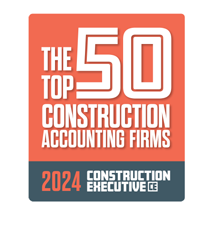Building Your Success from the Ground Up
For decades, PBMares has helped contractors and real estate developers navigate through the troubled and ever changing waters of this industry. Contractors, developers, heavy construction specialists, home builders, land developers and specialty trades professionals all face their own challenges as they strive for success in the industry, but they have one thing in common: the need for excellent accounting and financial advisory services. Since every client is different, we strive to listen carefully to each one so we can identify opportunities and communicate clearly the options and choices available. Our goal is to provide all clients with the current, comprehensive information required to make the best decisions for their company.
Construction Services
With PBMares, you get a complete package. Our accounting and assurance teams work closely with tax compliance specialists to ensure the best financial presentation while maximizing your tax savings. We have seen how quickly economic conditions can change and are there to assist with budgeting and forecasting, job costs analysis, strategic planning down to succession planning and business valuations. To learn more about our services, click on the appropriate link below.
What Our Customers Say
“David Nice Builders has a 45-year plus relationship with PBMares. Their professionalism, expertise and guidance has been an integral part of our company growing from a small residential construction company to a nationwide general contractor with projects across 48 states and divisions handling retail, commercial and civil; as well as a second company that manufactures retail fixtures, which compliments the general contracting company.
PBMares provides exceptional service in dealing with all the out-of-state tax returns as well as ongoing advice for overall corporate tax strategies and miscellaneous business accounting needs beyond our seasoned in-house accounting team. They are always very responsive and easy to work with. We consider them a valuable resource as one of our trusted business partners.”
“We received prompt, professional, and knowledgeable service. I always felt confident in the work they performed.”
PBMares’ construction specialists work with clients ranging from small contractors
to million dollar organizations throughout the Eastern United States.
Webinar Recordings
PPP Forgiveness Application & Tax Planning for Contractors
Navigating COVID-19: Essential Next Steps for Contractors


